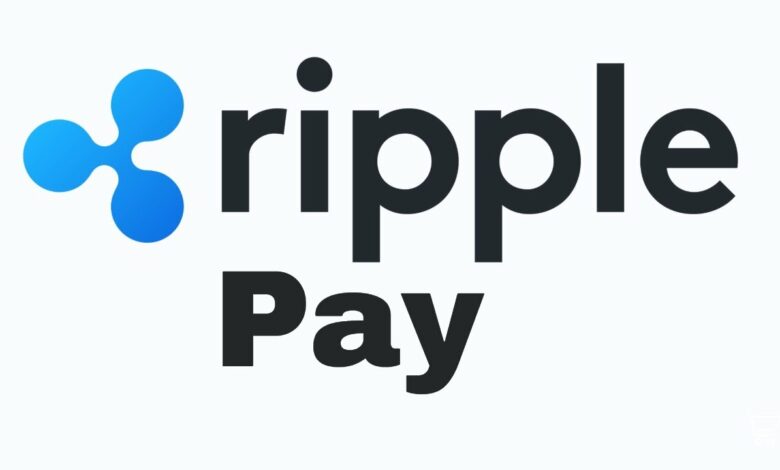RipplePay: Over the past year, India has witnessed significant growth in the adoption of Ripple. Why?

With a history dating back to 2004, RipplePay was initially a money transfer platform launched by Ryan Fugger. Since then, it has found different forms and developed through modifications and progress. Its main goal is to create a cost-effective, more transparent, and more secure alternative to currently available financial transfer systems.
The United States rank higher than India in crypto adoption. Despite the uncertainty surrounding the future of unregulated digital assets, adopting cryptocurrency in India has gained rapid traction. Since 2013, cryptocurrencies such as Bitcoin and Ripple have seen a steep rise in investments.
By May 2021, India had invested approximately US$6.6 billion in cryptocurrency. Gold has been considered a good hedge over the years, but young people have turned to cryptocurrencies as an alternative hedge against the economic downturn.
India’s Ripple Revolution

The digital market is awash in ripples. Another benefit of XRP is that it also be used to receive different currencies. Gross settlement in real-time occurs between banks based on the transfer of funds.
Unlike other networked financial services, the firm aims to liberate consumers from restrictions imposed by credit cards, banks, PayPal, and other institutions that limit access to funds by charging fees, charging for crypto exchanges, and delaying processing.
In 2017, Ripple debuted in India. Since then, the company has been in business and provides products for banks such as Yes Bank, Kotak Mahindra Bank, Axis Bank, and Federal Bank. In India, the company’s price has been increasing dramatically against Bitcoin for the last few years.
During the 2020 year, the company had expressed serious interest in offering their ODL (On-Demand Liquidity) solution in the Indian market for faster, easier, and cheaper remittances. Their recent policy paper entitled “The Path Forward for Digital Asset Adoption in India” discussed ways Indian policymakers can take advantage of various opportunities and optimize the regulatory framework for the Indian digital asset ecosystem. XRP presented its proposed framework for a balanced approach to the crypto industry to influence the country’s legislators.
Ripple’s diversification of initiatives to make the cryptocurrency landscape more balanced is a significant attraction to Indian investors.
Ripple’s Future in India
For budding and upcoming crypto enthusiasts, the firm is a perfect investment. Due to its advantages and new features, XRP is proving to be a compelling option for India. Financial institutions and investors may start realizing its benefits soon, giving it an even brighter future. As one of the leading cryptocurrencies today, it is bringing exciting new opportunities to the market.
RippleNet: how it works
In today’s world, speed is essential. Money transfer institutions traditionally operate in an institutional setting. Participants worldwide must interact with each other, basically figuring how to integrate different systems that might not be readily compatible. The RippleNet network essentially permits participants to interact more smoothly while solving problems, decreasing transaction times and costs more transparently. An entity can transfer funds from one country to another in a currency it holds. For example, if you live in Sweden, you might not wish to receive Canadian dollars. RippleNet’s ODL lets each party send and receive their native currency using XRP to exchange their native fiat currency.

Due to technological advancement, the traditional money transfer world is out of date regarding speed, efficiency, and cost of data movement and communication. Ripple’s solutions can speed up global money transfers.
In a traditional world, transferring money worldwide can involve several procedures, mainly if the institution is centralized. It is common for the sender to bear these costs, with transaction times and fees varying from transaction to transaction, though generally they are pretty expensive and take a day or two to complete. Unlike traditional banking, however, RippleNet lowers transaction costs and speeds up transactions.
Discrepancies and advantages of Ripple

Before choosing to use the firm as an individual or a business organization, there are both positives and negatives to consider.
The advantages of Ripple
To create opportunities and solve problems, digital payment firm uses cryptography. The payment type and affected regions determine how long it takes to process cross-border payments.
A ripple of solutions aims to improve efficiency and speed while cutting costs. Additionally, RippleNet includes many players, so the answer isn’t uncommon. As networks become more commonplace, Ripple’s future impact will be more significant when traditional companies sign up for their solution.
The disadvantages of Ripple
As an alternative to SWIFT, the market leader, Ripple, is trying to establish itself as an alternative to a crowded financial technology space. In the traditional world, modifying the status quo can also be challenging, time-consuming, and require transition and education.
Stellar, among others, is a peer competitor to the firm in the crypto space. Ripple has an advantage since it is the first innovator, but it must continue innovating and growing its network.
Unlike the traditional finance sector, the crypto sector has had a lack of regulation. Do regulatory authorities need to create laws that more closely align with this new wave of innovation, or should the crypto space fall under existing traditional rules and guidelines? One such regulatory issue is firm’s arrest by the SEC. For Ripple to replace legacy systems with XRP, regulatory authorities must clarify what type of asset class XRP fits into before such a move is made.
Edited by Sanjana Simlai.




